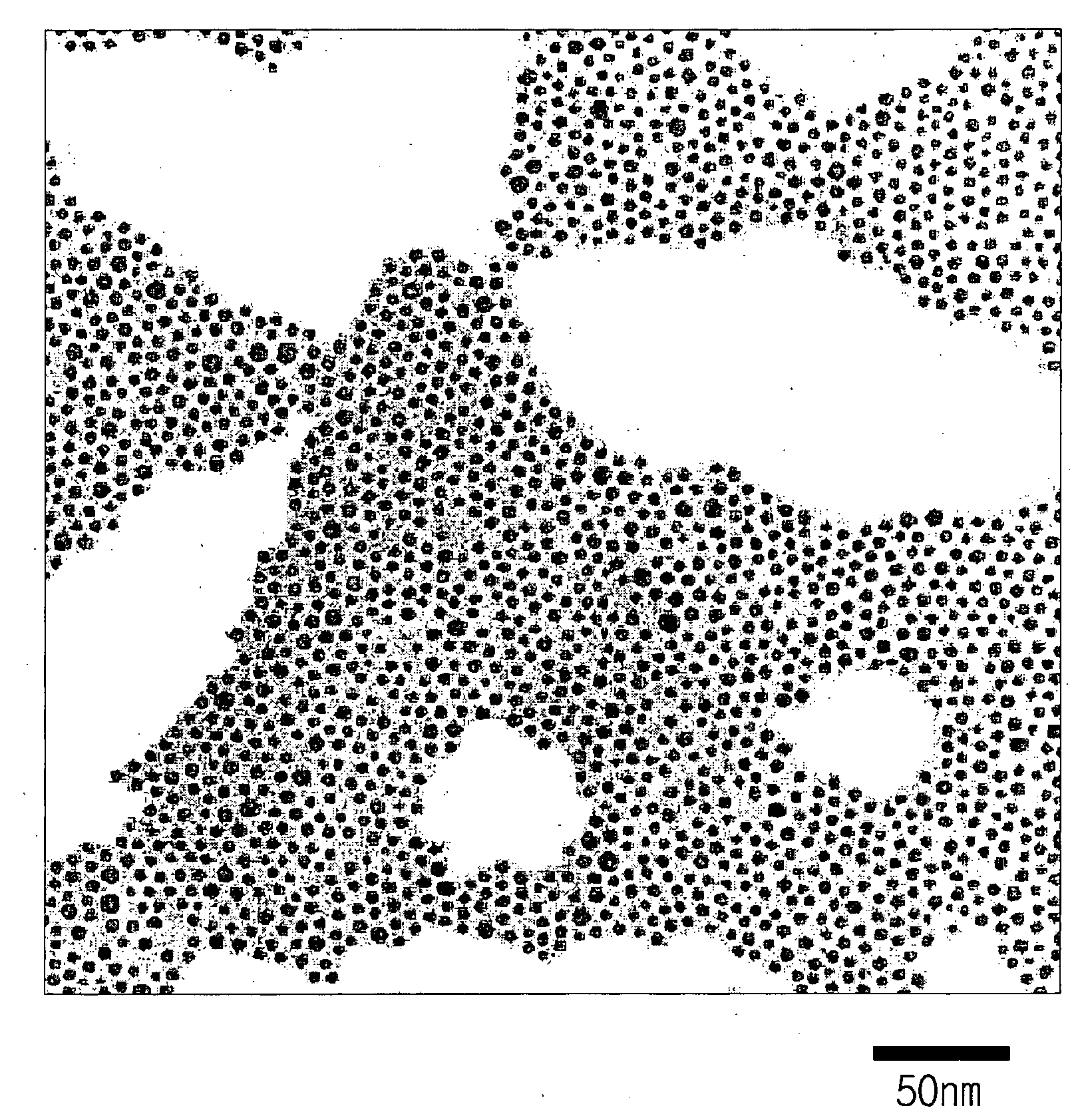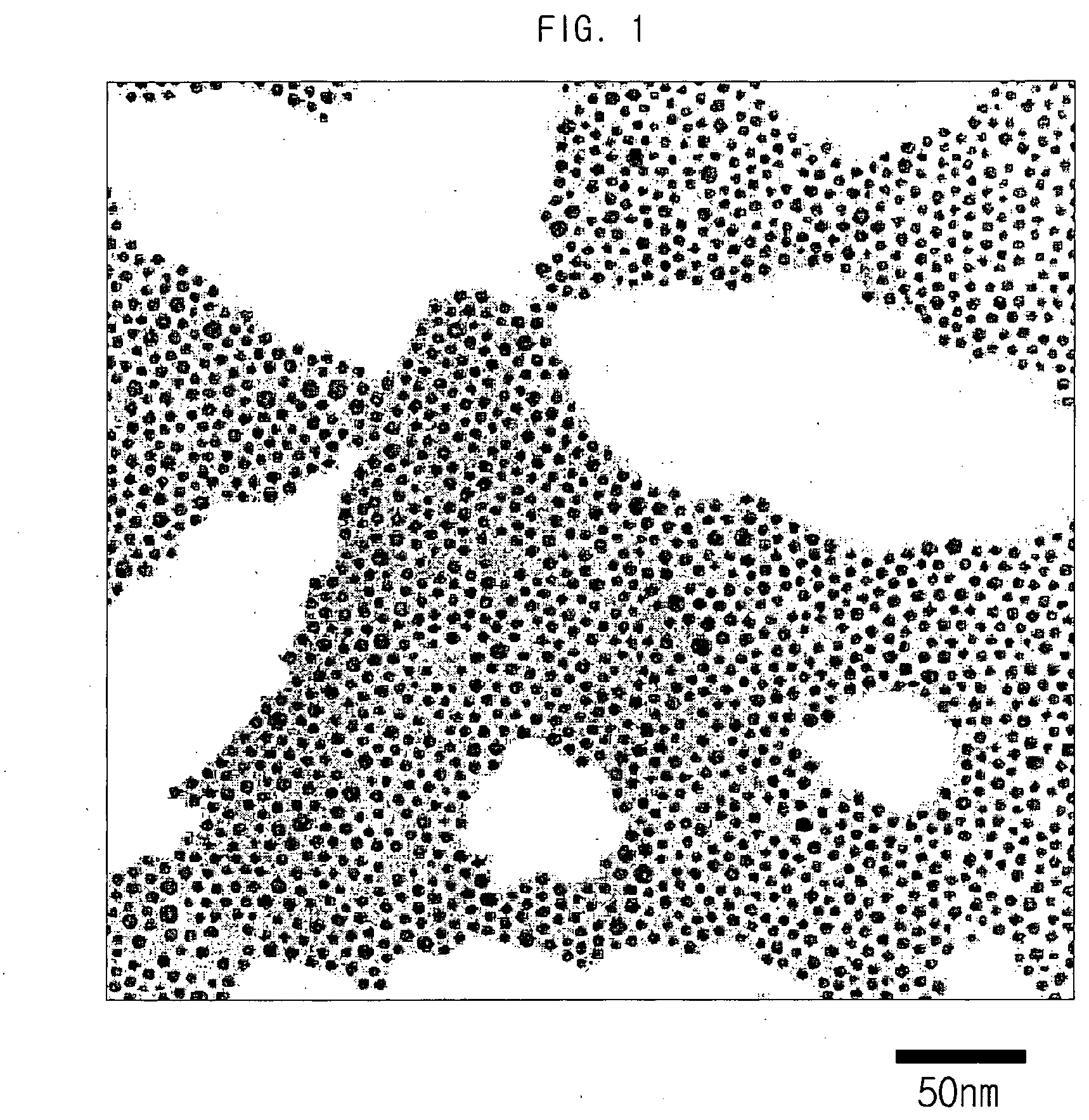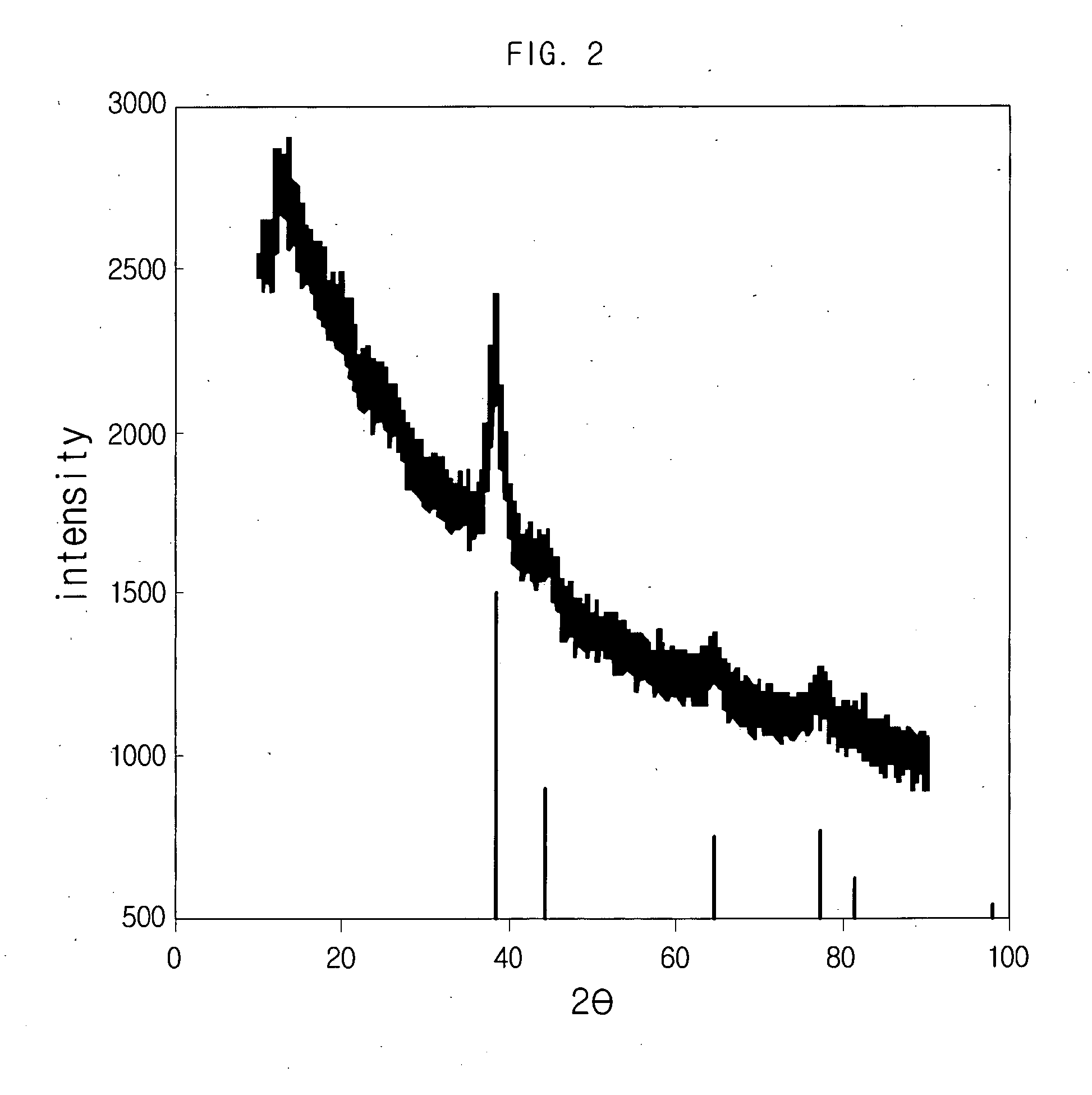Method for manufacturing metal nanoparticles
- Summary
- Abstract
- Description
- Claims
- Application Information
AI Technical Summary
Benefits of technology
Problems solved by technology
Method used
Image
Examples
example 1
Preparation of Metal Nanoparticles
[0057]Silver nitrate 34 g and oleylamine 300 g were stirred and heated to dissolve the silver nitrate to 80° C. The reaction mixture was yellow color and after the silver nitrate was completely dissolved, formic acid 8 g was added at room temperature. As soon as adding formic acid, the reaction mixture turned to dark brown with exothermic reaction. The reaction was performed for about 2 hours and then a mixture of acetone and methanol was added. Silver nanoparticles were obtained through a centrifuge and the produced silver nanoparticles were determined to have a size of about 7 nm.
example 2
Preparation of Metal Nanoparticles using a Small Molecule of Alkyl Amine
[0058]Silver nitrate 34 g, oleylamine 120 g and toluene 250 ml were stirred and butylamine 30 g was added to easily dissociate silver nitrate while stirring. The reaction mixture was stirred and heated to 80° C. till turned to a clear solution. As soon as formic acid 8 g was added, the reaction mixture was turned to dark brown with exothermic reaction. The reaction was performed for about 2 hours and then a mixture of acetone and methanol was added. Silver nanoparticles were obtained through a centrifuge and the produced silver nanoparticles were determined to have a size of about 10 nm.
example 3
Preparation of Metal Nanoparticles using a Metal Catalyst
[0059]Silver nitrate 34 g and oleylamine 300 g were stirred and heated to dissolve the silver nitrate to 80° C. The reaction mixture was yellow color and after the silver nitrate was completely dissolved, Sn(ac)2 10 g was added at room temperature. As soon as adding Sn(ac)2, the reaction mixture turned to dark brown with exothermic reaction. The reaction was performed for about 2 hours and then a mixture of acetone and methanol was added. Silver nanoparticles were obtained through a centrifuge and the produced silver nanoparticles were determined to have a size of about 5 nm.
[0060]A TEM image of the silver nanoparticles produced in Example 1 is shown in FIG. 1. It is noted that the silver nanoparticles has uniform size of less than 10 nm as shown in FIG. 1.
[0061]A PXRD analysis of the silver nanoparticles produced in Example 1 is shown in FIG. 2. It is noted that the silver nanoparticles having FCC (face-centered cubic) struct...
PUM
| Property | Measurement | Unit |
|---|---|---|
| Temperature | aaaaa | aaaaa |
| Nanoscale particle size | aaaaa | aaaaa |
| Temperature | aaaaa | aaaaa |
Abstract
Description
Claims
Application Information
 Login to View More
Login to View More - Generate Ideas
- Intellectual Property
- Life Sciences
- Materials
- Tech Scout
- Unparalleled Data Quality
- Higher Quality Content
- 60% Fewer Hallucinations
Browse by: Latest US Patents, China's latest patents, Technical Efficacy Thesaurus, Application Domain, Technology Topic, Popular Technical Reports.
© 2025 PatSnap. All rights reserved.Legal|Privacy policy|Modern Slavery Act Transparency Statement|Sitemap|About US| Contact US: help@patsnap.com



